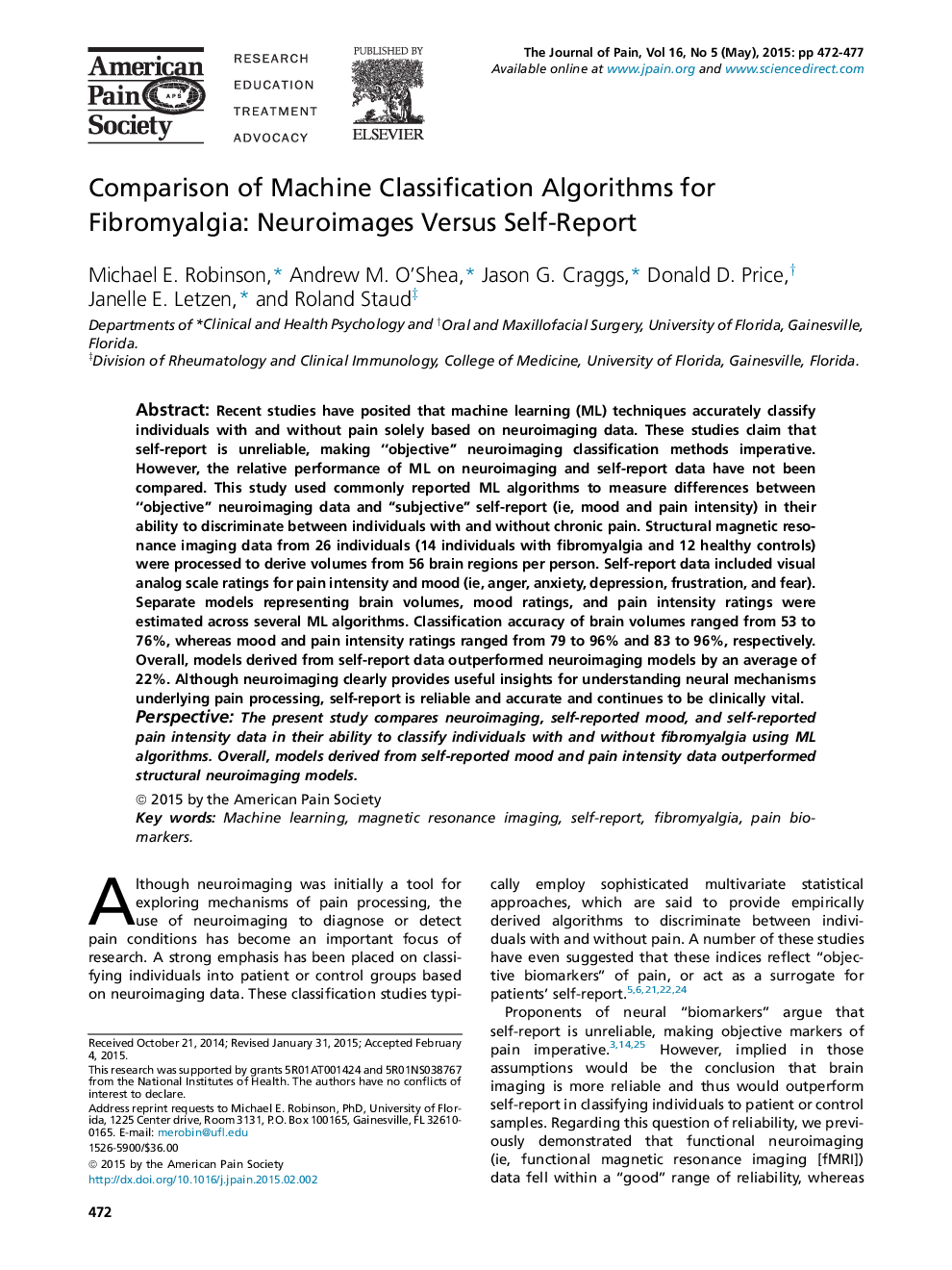| کد مقاله | کد نشریه | سال انتشار | مقاله انگلیسی | نسخه تمام متن |
|---|---|---|---|---|
| 2728668 | 1566733 | 2015 | 6 صفحه PDF | دانلود رایگان |
• Machine learning models were used on data from fibromyalgia patients and controls.
• We compared neuroimaging and self-report data as methods of group classification.
• Self-report outperformed neuroimaging data for determining group membership.
Recent studies have posited that machine learning (ML) techniques accurately classify individuals with and without pain solely based on neuroimaging data. These studies claim that self-report is unreliable, making “objective” neuroimaging classification methods imperative. However, the relative performance of ML on neuroimaging and self-report data have not been compared. This study used commonly reported ML algorithms to measure differences between “objective” neuroimaging data and “subjective” self-report (ie, mood and pain intensity) in their ability to discriminate between individuals with and without chronic pain. Structural magnetic resonance imaging data from 26 individuals (14 individuals with fibromyalgia and 12 healthy controls) were processed to derive volumes from 56 brain regions per person. Self-report data included visual analog scale ratings for pain intensity and mood (ie, anger, anxiety, depression, frustration, and fear). Separate models representing brain volumes, mood ratings, and pain intensity ratings were estimated across several ML algorithms. Classification accuracy of brain volumes ranged from 53 to 76%, whereas mood and pain intensity ratings ranged from 79 to 96% and 83 to 96%, respectively. Overall, models derived from self-report data outperformed neuroimaging models by an average of 22%. Although neuroimaging clearly provides useful insights for understanding neural mechanisms underlying pain processing, self-report is reliable and accurate and continues to be clinically vital.PerspectiveThe present study compares neuroimaging, self-reported mood, and self-reported pain intensity data in their ability to classify individuals with and without fibromyalgia using ML algorithms. Overall, models derived from self-reported mood and pain intensity data outperformed structural neuroimaging models.
Journal: The Journal of Pain - Volume 16, Issue 5, May 2015, Pages 472–477
